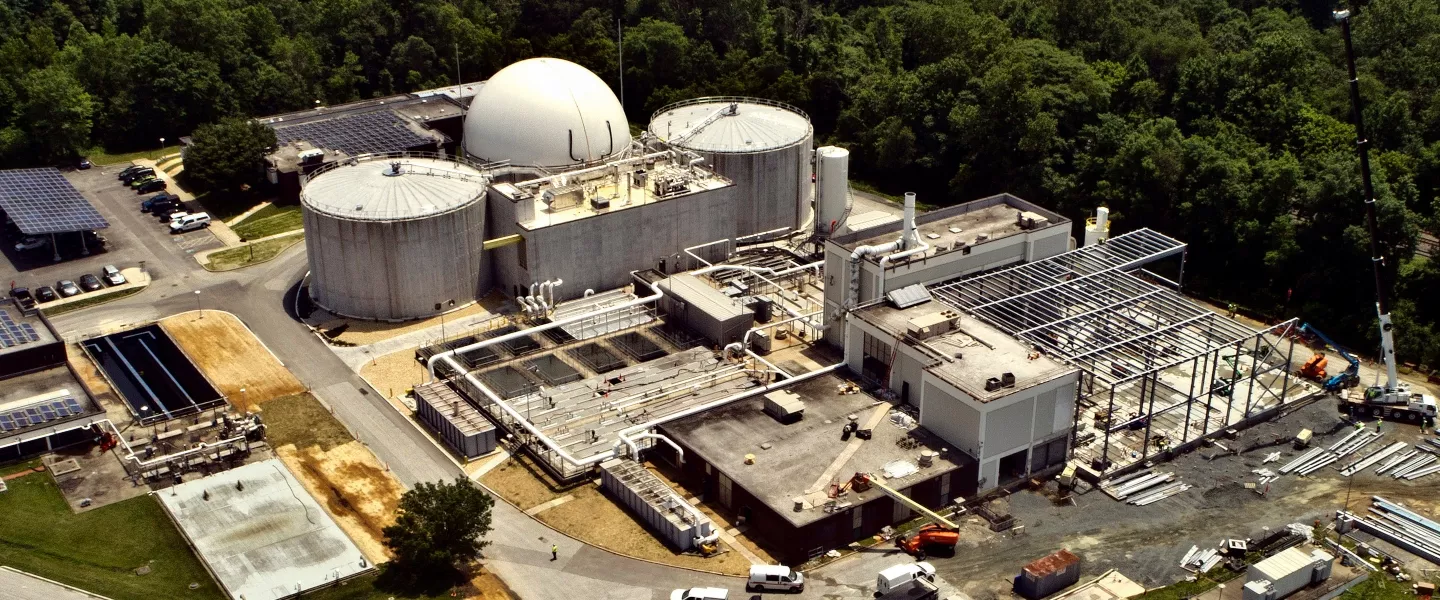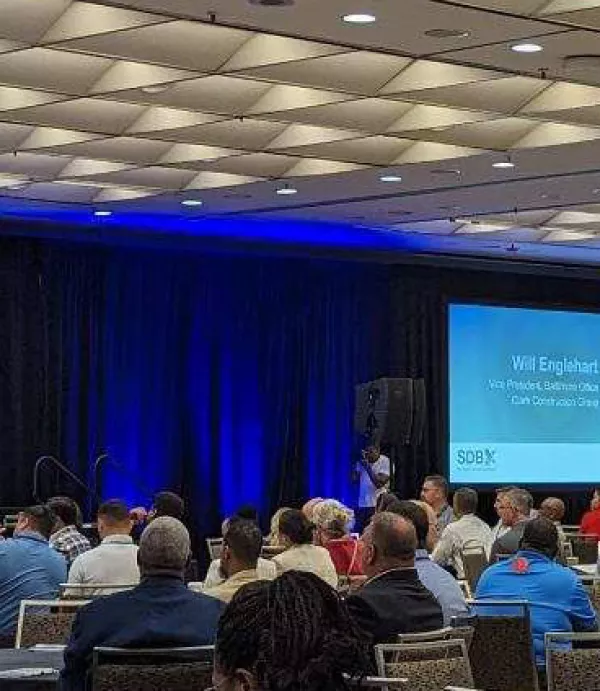Commitment to Excellence Drives Clark Water’s Success at Howard County’s Little Patuxent Water Reclamation Plant
September 11, 2019

Earlier this year, Clark Water achieved on-time substantial completion for Phase I of the Biosolids Process Facility Improvements Project at the Little Patuxent Water Reclamation Plant in Howard County, Maryland.
The Howard County Little Patuxent Water Reclamation Plant project is a complete upgrade and renovation of the plant’s solids handling facilities. Currently, the facility serves 56% of Howard County residents and has the ability to process up to 29 million gallons of wastewater per day. Upon project completion, the facility will no longer need to utilize lime stabilization to create Class A biosolids, will produce 85% less biosolids, and will utilize biogas for energy – allowing for biosolids land application costs to be lowered by $2 million annually.
“Throughout the three years of Phase I planning and construction, the team did a fantastic job on an incredibly complex project,” said Ben Miller, a senior project manager for Clark Water. “Close coordination with plant staff and a dedication to client service were required from everyone to ensure seamless plant operations while maintaining the construction schedule and ensuring the highest quality of work.”
The treatment plant operates at all times, requiring extensive planning for every construction activity to avoid unplanned process impacts. In addition to maintaining plant operations, the team looked for opportunities to improve operations. Construction of the anaerobic digestion facility was accelerated by five months to start commissioning during a warmer period, helping bacteria growth. This decision ultimately enabled earlier use of this more efficient anerobic digestion process.
One milestone in the Clark team’s effort to maintain plant operations required a three-day complete shutdown of solids processing in April 2018 to replace an existing single belt conveyor with two new screw conveyors. To successfully complete the installation, the Clark team planned this complex installation over the course of a year. Once the installation started, the Clark team raced against the clock to complete the installation before storage tanks were completely filled. This portion of the project, which met its targeted deadline, is a testament to the hard work, dedication, and collaboration among all project stakeholders.
The project reached another key milestone earlier this year when the team installed and commissioned the first AirPrex Phosphorus Precipitation System in the United States. The system is designed to protect downstream piping and equipment as well as the Enhanced Nutrient Removal process by turning highly concentrated, soluble phosphorus, a biproduct of the new anaerobic digesters, into struvite crystals which are contained in the biosolids and land applied where the phosphorus may be beneficially used for agriculture.
During Phase I, Clark added anaerobic digestion, sidestream deammonification, phosphorous precipitation, two solids storage systems, gravity belt thickeners, a scum holding tank, a biofilter for odor control, a new gravity thickener, two new primary solids screens, new solids conveyors, electrical systems, and a new Supervisory Control and Data Acquisition System (SCADA) for process control – all while maintaining the operations of the facility.
Phase II of the Little Patuxent Water Reclamation Plant project, which is currently underway, adds a new facility for direct heat drying. The new facility will be constructed over top of the old lime stabilization facilities’ basement and foundation. This required all stakeholders’ buy-in and careful temporary protection of existing utilities that ran through the old building while the new building is being constructed. The new facility includes a 40’ high steel building, new elevated electrical substation, motor control centers, biosolids belt drying system, odor control, and dried product storage silos. The project is on schedule for dryer commissioning in July 2020 and final completion by October 2020.


